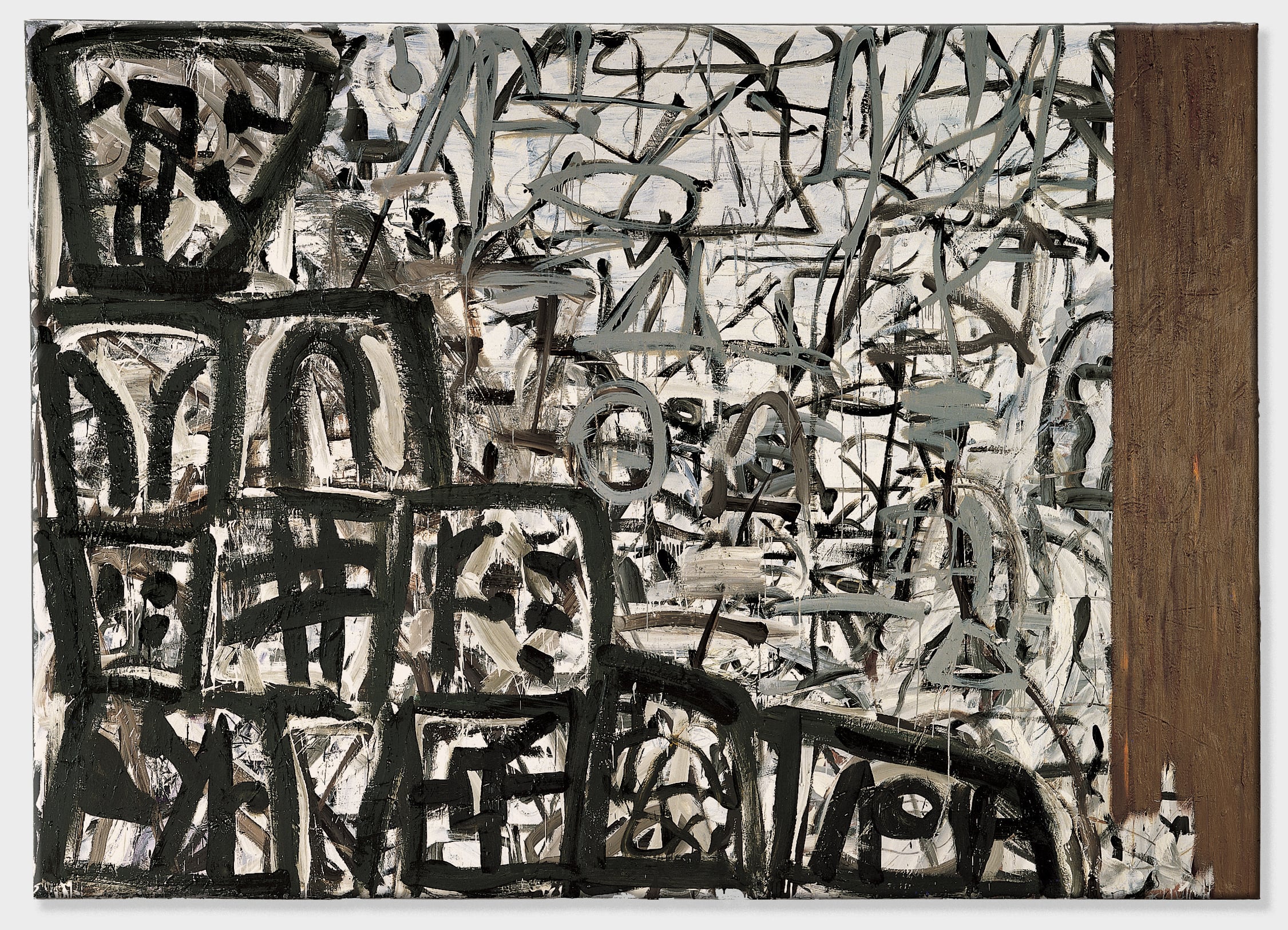In 1959, the exhibition New American Painting was held at Tate, London, showcasing the work of artists such as Willem de Kooning and Jackson Pollock and their work in the Abstract Expressionist style. Basil Beattie was greatly influenced by what he saw at the exhibition and began incorporating their techniques and approach into his own works. Abstract Expressionism has continued to influence his practice over the years.
By the 1980s, Beattie began to build up his canvases to create multi-layered imagery, of which Pathfinder (1989) is one of the best examples. The work shares the dynamic energy of Pollock’s paintings, yet, it also shows the expressive influence of Mark Rothko in its exploration of psychological and emotional states of being.
As the title suggests, Pathfinder, is an exploration of place and belonging. Beattie uses colour to build depth into the canvas while layering repeated motifs in an infinitely complex structure. Beattie borrows, in particular, from architectural motifs, such as arches and tunnels, as well painting thick strokes of bisecting lines and crossroads. These shapes suggest movement and, along with the title, the idea of a journey. Above all, the signifiers and forms reflect the psychological drive for order and understanding. At the same time, the multiplicity of imagery points to the impossibility of total rationalisation.
Beattie disrupts a singular reading of the work, or single path, through the repetitive use of symbols and his distortion of space. The strong vertical line of warm brown on the right of the canvas abruptly halts the plane of vision, flattening the depth of the canvas. Similarly, the cubic forms that create a stairway that ascends to the canvas’s top right leads to nowhere. Beattie creates an ambiguous hinterland articulated by disconnected forms.
While the work points to the overwhelming feeling of chaos in a world that seeks rationality, Beattie’s open ended forms simultaneously allow an optimism in their infinite possibilities. Most importantly, with its plane of frenzied forms, Pathfinder emphasises the importance of the journey and the exploration towards finding a place of belonging, and in doing so, Beattie’s work retains its potency and energy
(By Alexandra MacKay)
